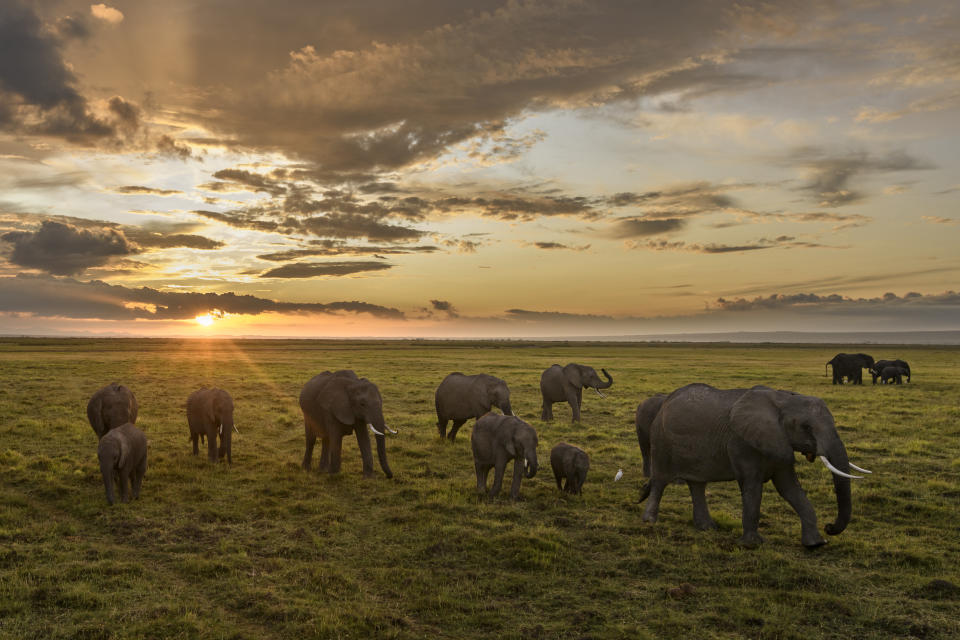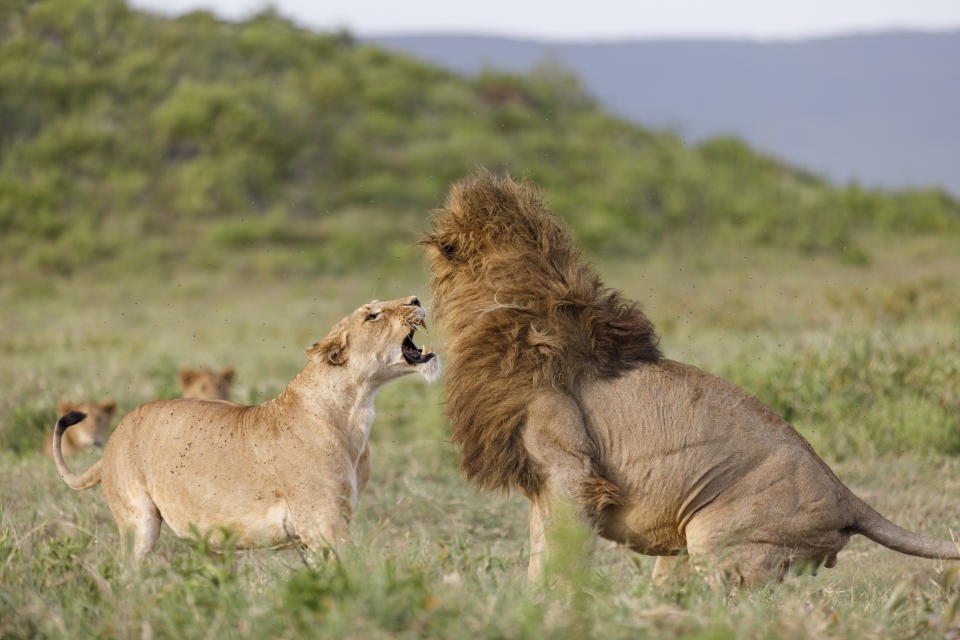In ‘Queens,’ National Geographic’s Emmy-Contending Documentary Series, Female Leaders Rule The Natural World

A young daughter prepares to leave the family home with her mother’s blessing to start a new life. An expectant mother worries about the viability of her mate to help bring up their first child together. A grandmother’s wisdom jumpstarts her offspring’s learning of survival skills.
These scenes from the animal world are part of National Geographic’s six-part documentary series Queens, filmed over four years in remote locations on three continents. The Emmy-contending series, which premiered in March on National Geographic Channel, is now streaming on Disney+ and Hulu.
More from Deadline
National Geographic says Queens is unprecedented in natural history filmmaking: the first time a series focuses fully on stories of female power, resilience, strength, and love, and boasts the first nearly all-female crew to shoot, produce and direct a wildlife documentary.

From magnificent African lions protecting their cubs from predators to the gentle and empathetic bonobos of the Congo to the wise elephants that travel ancient pathways of the African savanna, these animals have one thing in common: They are led by women — alpha females of the animal kingdom who shape the destinies of their often-endangered species by using cooperation and wisdom rather than brute strength.
Even among creatures as distinct as brown bears, orca whales, hyenas, gelada monkeys and wolves, they share many of the same skills of survival which often involve using alliance and friendship in addition to power and dominance.
By putting the natural world into focus through a female lens, guided by the narration of Oscar-nominated actress Angela Bassett and a vibrant original score and contemporary global soundtrack, this is not your grandfather’s wildlife documentary.

The filmmakers’ goal was also to appeal to people not necessarily interested in the genre. “We really hoped that we would bring in people that just love drama and entertainment and want to hear some great music and be told a great story. We wanted to reach that audience,” says showrunner Chloe Sarosh, who notes the series was commissioned by two female executives. “We wanted everyone to laugh, to cry, to see themselves in these characters. Each episode is a mini-movie, in its own world with these brilliant characters.”
Queens is also groundbreaking in that it gave female filmmakers like Faith Musembi the opportunity to work on projects in their native countries, work that traditionally has gone to European white men and filtered through their narrative.

“Both the product and the process of it was different. So, for example, with traditional natural history films, they would be made with the crew from mostly the U.K. or the Global North, and they would fly to the different locations in Kenya,” says Musembi, the first Black Kenyan female producer on a major wildlife series. “There really wasn’t any way for me as a local filmmaker to find any inroads into any of these crews. So, Queens was particularly intentional about working with the filmmakers who live in those countries as part of the ambition that was bigger than the actual product.”
Another part of the intentionality was using the voice of a female narrator. “We wanted a voice of female experience, not a voice of gravitas and science,” says Sarosh. “New voices also come from new people making these films, new people like Faith who have something different to bring to the genre. We wanted every element of Queens to be groundbreaking.”
The fresh perspective also extends to the music, with an original score composed by Morgan Kibby, a former member of the French electronic music band M83 who has written for Harry Styles and Lady Gaga.
Needle drops include songs by leading female artists including Sia, M.I.A. and Santigold. Epitomizing the universality of female struggle, strength and survival, there’s even a reworked composition and vocal (by Wyvern Lingo feat. Loah) of No Doubt’s massive 1995 hit, “Just a Girl,” which Gwen Stefani cleared for usage in the production. The original main title track is composed and performed by rising singer-songwriter Alewya.

Across the animal kingdom in diverse environments of rainforests, mountainous deserts and oceans, the range of female leadership is broad and varied. Some are benevolent and some are highly autocratic, pushing out others whose loyalty is questioned or those who pose a threat to their leadership.
“We wanted every episode to have a very different theme and to reveal something very different about female leadership styles,” says Sarosh. “We wanted each episode to be somewhere that looked and felt very different and very immersive. We wanted the audience to watch each single episode and feel like they’d never seen that before, for everything to be new and exciting.”
Several of the episodes explore how the matriarchies of the animal kingdom are affected by and are adapting to human encroachment on their territories and the effects of climate change on their environments.
Although the crews normally worked with long lenses at a safe distance, there were some instances where they went up close and personal with their subjects. The elephants, in particular, trusted the filmmakers enough to bring their babies close to the camera vehicles.
“That would always be a high because you recognize how sentient these beings are,” says Musembi. “Elephants are just so intelligent. You make eye contact with them, and you get chills because you can see they recognize you’re there.”
With the bonobos, crews built a platform in the tree canopy in which the primates live — the first time it has been done. Scientists who study the apes didn’t know how the animals would react, yet after some investigation, a human being was accepted into their world.

“Our cinematographer Tania Escobar has said all the males displayed around her and seemed to question what she was doing up there,” Sarosh recalls. “And then the matriarch came in and seemed to say okay. The rest came and grouped around her and then that evening they built their nests around the tree platform, and they all went to sleep around Tania. Tania is the only woman who can ever say she’s been fed with a group of bonobos.”
As the filmmakers discovered the breadth of female leadership styles throughout their explorations, they found lessons that could be applicable to the human world.
“You can be strong and vulnerable,” says Musembi. “You can be these seemingly contrasting things and it’s okay because different situations call for different leadership qualities. You don’t have to be either/or. And we see that a lot across all the species.”
Best of Deadline
2024-25 Awards Season Calendar - Dates For Oscars, Tonys, Guilds, BAFTAs, Spirits & More
New On Prime Video For March 2022: Daily Listings For Streaming TV, Movies & More
Sign up for Deadline's Newsletter. For the latest news, follow us on Facebook, Twitter, and Instagram.

 Yahoo News
Yahoo News 
